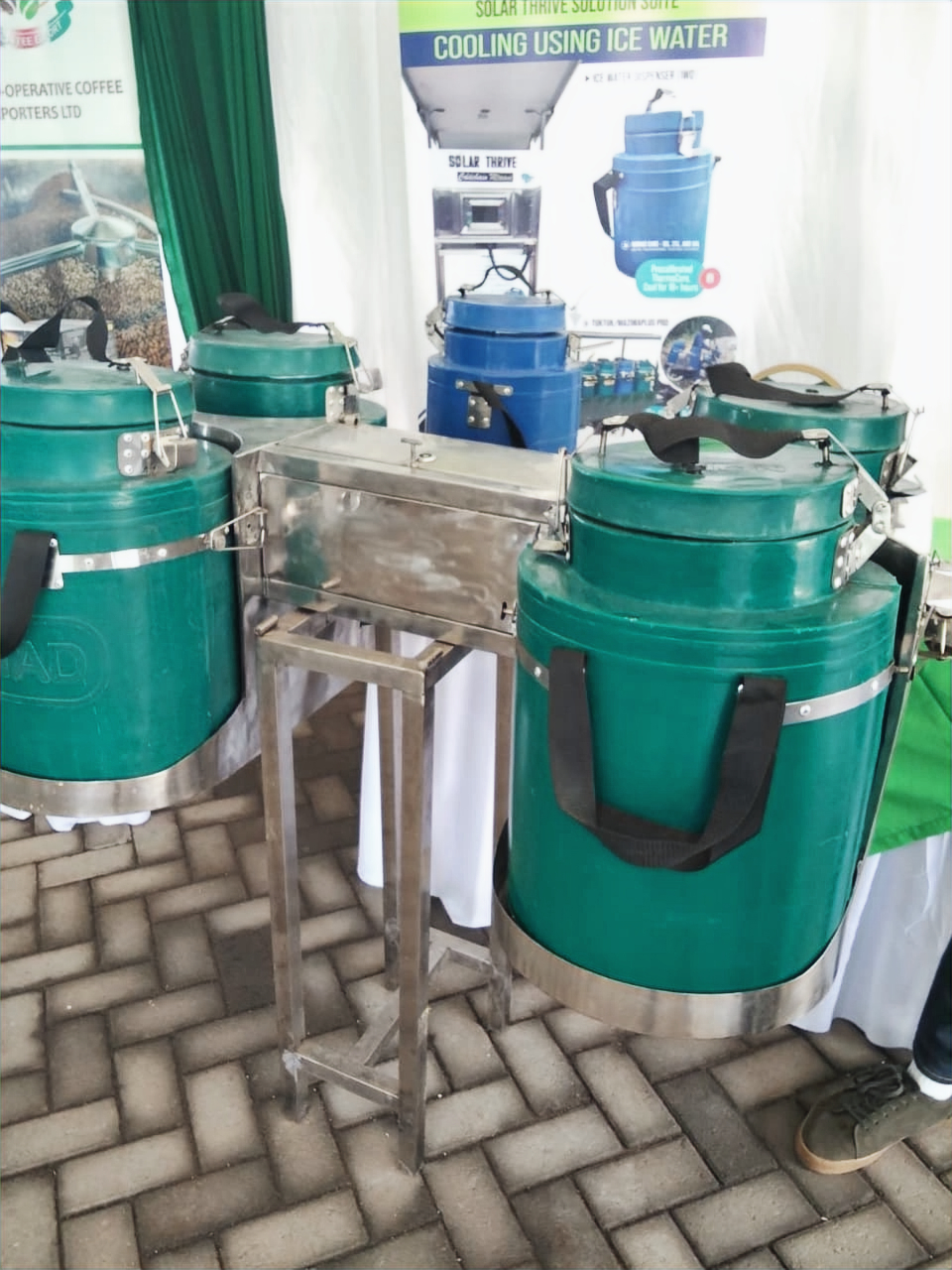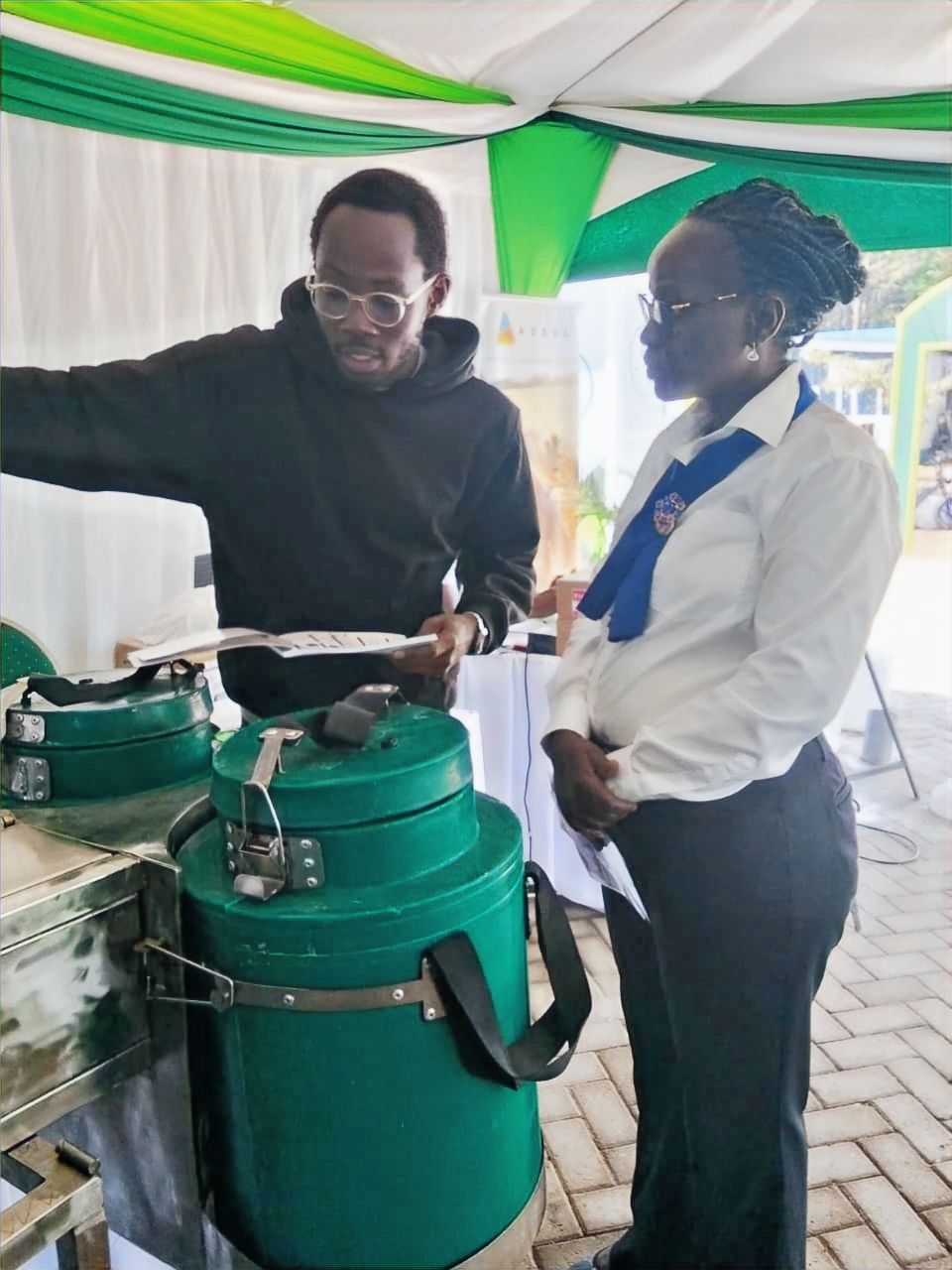Solar Cooling Keeping Dairy Sector Alive In Rural Kenya
- Moraa Nyangorora

- Oct 10
- 3 min read
COOLING BOOSTING DAIRY SALES; KEEPING DAIRY SECTOR VIBRANT
“Our solar cooling system isn’t just about temperature; it’s about trust. Farmers can finally deliver milk knowing it will reach the market fresh.”
— Savanna Circuit Technical Lead
Savanna Circuit booth at ASK Trade Fair
When I stopped by the Savanna Circuit Technologies stand at the ASK Trade Fair in Nairobi, I wasn’t expecting to find a climate solution disguised as a milk cooler.
One of their sales team members walked me through the innovation — a sleek, solar-powered cooling system mounted on a trolley, small enough to fit on an electric motorcycle or tuk-tuk.
That conversation turned into a quiet moment of revelation: this is how clean energy can change lives — one can of milk at a time.
Across rural Kenya, evening milk collections face a tough reality. Once the sun sets and the power goes out, milk spoils fast.
In fact, Kenya loses nearly 290 million litres of milk each year before it even reaches collection centres — mostly due to heat and lack of cooling.
Farmers often wake up to sour milk they can’t sell. Processors reject deliveries. Families lose income. Consumers lose trust. It’s not just an agricultural issue — it’s a health and climate story too.
The Innovation: Solar Cooling that Moves with the Milk
Solar cooler mounted on electric motorbike or tuk-tuk
Solar-powered pre-chillers that keep milk cold from farm to collection.
Cooling-as-a-Service (CaaS) — farmers don’t buy expensive hardware; they access cooling as a pay-per-use model.
Easy transport — specially designed milk cans fit neatly on electric motorcycles or tuk-tuks, staying balanced and cool even on rough rural roads.
“We designed the system so that milk can travel safely — even over bumpy roads — without losing its freshness,” a Savanna Circuit sales representative told me at the fair.
Savanna Circuit now serves over 22,000 smallholder farmers in at least 10 dairy zones across Kenya, including:
Nakuru, Narok, Kisii, Bungoma, Kakamega, Busia, Migori, Murang’a, Nyamira, Nyeri, Isiolo, Meru, and Taita Taveta.
These are areas where electricity is unreliable but dairy is livelihood.
In Isiolo and West Pokot, for instance, mobile solar coolers are helping pastoralist families keep milk fresh despite high temperatures and long travel distances.
Food Safety & Health
The benefits of this cooling system are immense, on the health side milk stays below 4°C, slowing bacterial growth and reducing risk of contamination. The result, a healthier, safer drink for families and children.
To the farmer this means less spoilage, more litres sold and a higher household income.
To the environment, the Solar energy replaces diesel generators, cutting emissions and energy costs.
This increases efficiency as the milk is easy to transport using electric tuk-tuks or e-bikes extending cooling to the last mile.
“This is what climate-smart agriculture looks like — simple, renewable, practical,”
Kenya’s government has rolled out 230 bulk milk coolers across 41 counties, increasing cooling capacity by nearly half a million litres daily.
The goal? To reduce national milk losses, stabilise prices, and give farmers confidence in the value chain.
This aligns perfectly with the private-sector innovation of solar systems like Savanna Circuit’s — creating a green bridge between policy, technology, and livelihoods.
Of course, scaling innovation is never smooth. Some communities still face limited access to financing, spare parts, or technicians.
Rural roads remain poor. And even with pay-as-you-go models, affordability can be a hurdle.
But where these systems take root, the impact is undeniable.
Clean energy is not just keeping milk cool — it’s keeping families resilient, children healthier, and carbon footprints smaller.
(
Farmer holding chilled milk can next to solar cooler
When I left the ASK Trade Fair that afternoon, the hum of the solar motor still echoed in my mind.
It wasn’t just about technology — it was about possibility.
If renewable energy can keep milk fresh in Kenya’s villages, it can just as easily keep hope alive for a climate-smart future.
Because in the story of Kenya’s dairy farmers, every cooled litre of milk is a victory — for health, for livelihoods, and for the planet.
_150x.png)













Comments